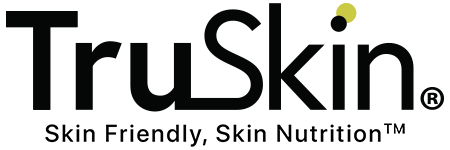
Collagen Gets All The Headlines, But What About Elastin?
Elastin is the unsung hero of resilient, bouncy, healthy-looking skin. So, sure, collagen needs your undivided attention, but don’t forget about this other important protein working hard to keep your skin in shape.
Put your hands up if you dream of the bouncy skin you had when you were young. And, while we might not remember our own, how adorable is the skin of a young baby? It’s. Just. So. Plump. Not to mention insanely springy and so incredibly soft. Gosh, why doesn’t our 30/40/50/60/70-something skin have the same bouncebackability? Not fair!
The thing is, just like the entire human body, your skin changes as you get older. It’s as inevitable as day turning to night. The clocks tick, life continues and your body ages. And that’s never going to change.
The structure of your skin is super important when it comes to how strong, supple, soft and smooth it remains during the aging process. Of course, collagen is the biggie – mainly because it’s the most abundant protein in the body, accounting for between 70 and 80 percent of all proteins within the skin alone. But collagen can’t do it all alone. It needs a wing man.
Enter elastin, the Robin to collagen’s Batman. The Watson to its Sherlock, if you will. And officially the unsung hero of bouncy, fabulous-looking skin.
What Is Elastin, Anyway?
Elastin is a structural protein (just like collagen) that’s produced by the fibroblasts in the middle layer of your skin, aka the dermis. While collagen provides the backbone to your skin, giving it strength and firmness, elastin helps the skin seamlessly work with your body’s natural movements, allowing it to stretch, flex and bounce back to its original position.
During childhood your skin is literally chock full of collagen and elastin. But as you race past early adulthood, you get to say a slow farewell to your skin’s strength and supple nature. It happens around your mid-20s – give or take – when your body starts to slow down and all the good stuff that made your skin so plump and baby-soft ups and leaves. Not only does your skin produce fewer of these important proteins but all the existing stuff begins to break down.
Of course, natural aging is the major factor here, but don’t forget that many of your lifestyle choices also play their part in the rate at which elastin packs its bags and leaves town. And they’re the things you can actually do something about. UV radiation from prolonged sun exposure is one of the biggest elastin-killers, as is chronic stress, environmental pollution and a diet that’s high in things like processed carbs and refined sugar. All these things trigger inflammation and oxidative stress which break down your skin’s elasticity at lightning speeds.
The result? Skin becomes weaker, thinner, less supple and less resilient. Which is why serious action is required. You know what they say, prevention is better than cure. And in this case, never a truer word has been spoken.
5 Ways To Protect & Preserve Your Skin’s Important Elastin Supplies
Stopping time is not something even the latest AI technology can accomplish. So, instead of worrying about your age, let’s focus on some of the things you CAN do to help protect your elastin (and your collagen as an added bonus!)…
1. Never Scrimp On Sunscreen
We know it’s tempting to lap up the sun’s warming, skin-bronzing rays, but UV radiation is the biggest cause of external aging. And science has proven it so. You see, UV rays actively break down elastin fibers by creating free radicals in your skin. And these free radicals compromise the structure of all the good proteins that keep your skin ticking over nicely. Nothing good comes from free radicals so you must do everything you can to keep them to a bare minimum. The easiest way to accomplish this? Apply a broad-spectrum sunscreen like SPF 30 Mineral Sunscreen with Vitamin C to any areas of exposed skin. Do this every day (even when it’s cloudy) and you can pat yourself on the back for safeguarding your skin and simultaneously protecting its important stash of collagen and elastin. Take that, sun.
2. Double Down With Topical Antioxidants
Did you know that topical antioxidants like vitamin C, vitamin E, green tea and niacinamide also act like your skin’s very own personal repair crew? While sunscreen limits the number of free radicals that form in your skin in the first place, antioxidants help to neutralize any that manage to slip through the net. Clever, right?
All of our facial serums are packed with antioxidants so if you’re not sure which is best for you, check out our guide right here.
3. Rethink Your Dietary Habits
As we mentioned earlier, sugar is one of the worst culprits for screwing up your collagen and elastin. The problem is a process called glycation.
Glycation occurs in the skin when excess sugar binds itself to vital proteins, leading to the formation of advanced glycation end products, aka AGEs. AGEs are everything their name suggests. They degrade collagen and elastin and thus compromise the entire integrity of your delicate skin, aging you up way quicker than you signed up for.
Try to avoid sugar-laden foods and alcohol and, instead, enrich your diet with foods that are rich in vitamin C (fruit and veggies), zinc (meat, eggs, beans and seeds) and omega-3 fatty acids (salmon, tuna, walnuts and chia seeds). Also, stay hydrated. And if you are partial to an alcohol beverage or two, make sure you counteract every glass with equal measures (or more) of water.
4. When In Doubt, Pick Retinol (Or Bakuchiol!)
As gold standards in skincare go, retinol is more often than not the pick of the crop. A form of topical vitamin A, retinol is a smart little cookie because it’s able to ‘communicate’ with your skin at a cellular level to truly rev up its production of both collagen and elastin.
Of course, retinol is not all moonlight and roses because it’s an extremely potent beast and can upset sensitive skin if it’s not used carefully. Follow a few retinol rules, however, and most people can use it comfortably and to great effect. We truly believe, for example, that if you patch test our Retinol Facial Serum or Retinol Moisturizer first, then introduce it slowly into your routine, you’re on to a real winner. Not convinced? NP. Try our Rejuvenating Longevity Serum which harnesses the powers of bakuchiol – that's nature’s gentler alternative to retinol, in case you’re yet to be acquainted. Note to self: it’s real good.
5. Manage Your Levels Of Stress
Stress raises your levels of cortisol and boosts the number of free radicals in your skin which upsets your skin’s barrier function, screws up your skin’s natural pH levels and seriously ruins its supplies of collagen, elastin, even hyaluronic acid. Nothing good comes from stress like that.
However, with today's busy lifestyles, keeping your stress levels under control is often easier said than done. But it's not impossible. Some of our favorite ways to de-stress include yoga, going for walks, reading, taking a bath or trying a new hobby. Basically, do whatever you can do to carve out a little me-time on the reg (even just a few minutes will help) and you will immediately help reduce your levels of stress and therefore look after your skin as an added bonus.









